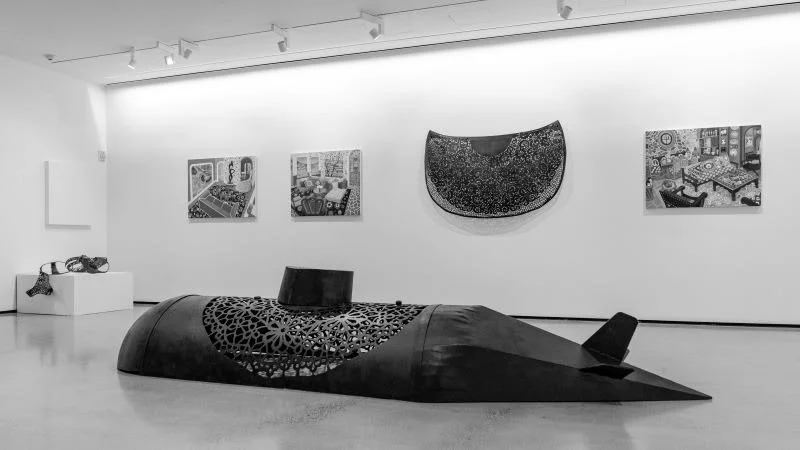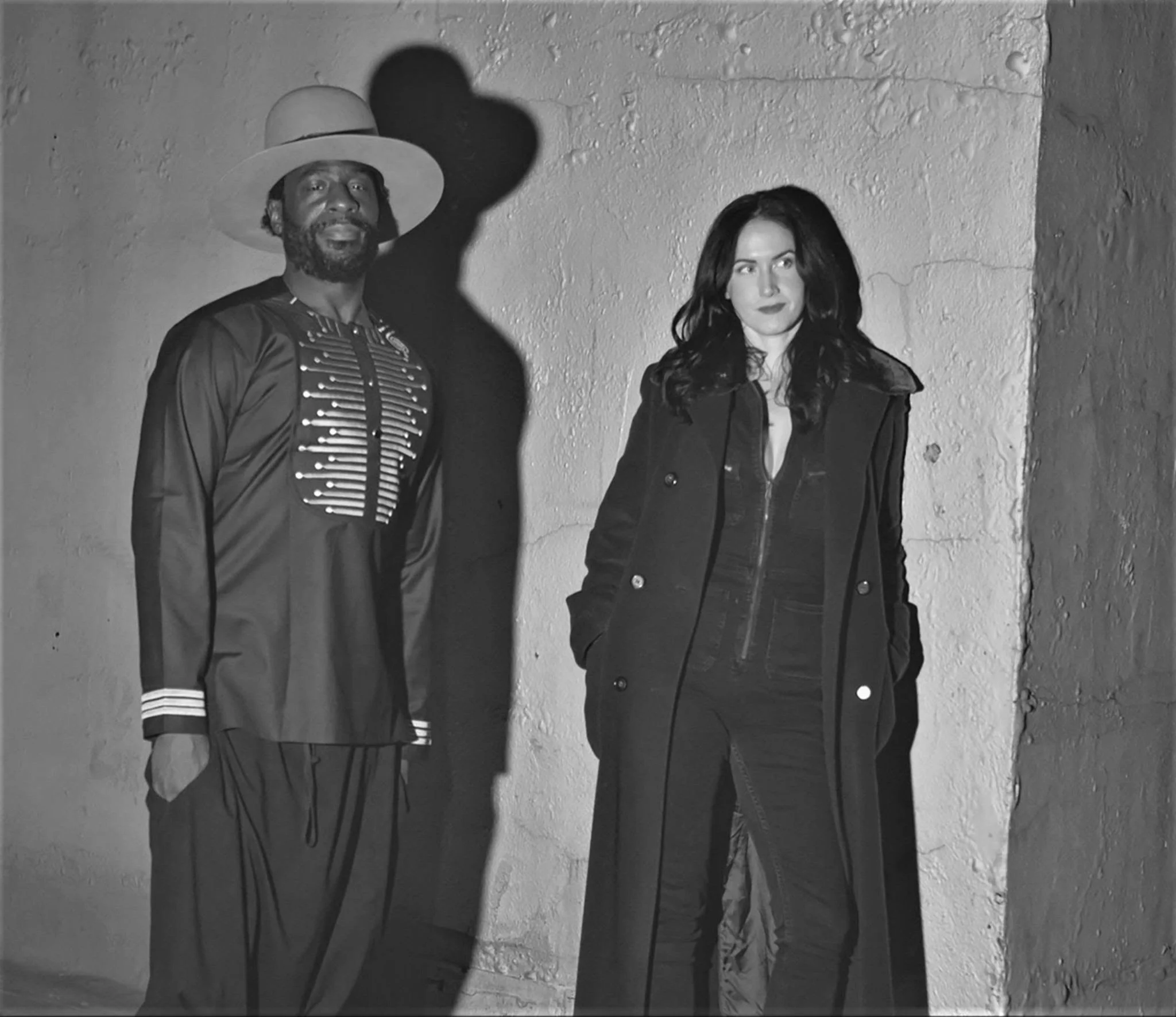The geographic abstractions of PHILIPPE HALABURDA
Philippe Halaburda is a French artist who is currently based in New York City. He describes his work as “Geographic Abstraction.” Halaburda visualizes the interconnectedness of environments with humans through the abstract use of color and lines. New York City’s urban setting has significantly influenced Halaburda’s work in a way that he explains as “psychogeographic mapping” or “geographic abstraction.” These methods are used as a means to create imagined landscapes that express human and non-human interactions.
Interview by Isabel Hou
You describe geographic abstraction as psychogeographic mapping. As an artist myself, I’ve always been intrigued by the interactions between emotions, environment, and perception. How would you further describe this kind of art to the everyday observer?
It's all about drifting or the [idea of] “let-it-go” from the French philosopher Guy Debord. I practice the theory of the Dérive as he described it in his thesis about the Situationist International. It took me years to realize I was following this same process (even if I read it during my twenties as a student, I never made the connection with my art [until] today). I have always worked in a very spontaneous creative way without really knowing what I was doing or what I was sharing with the audience. It was [there] by default, almost like a universal language.
When I came to the U.S., I started to dig into myself to find the essence of my work.
I want to reach the point where I lose control when I paint. That state of mind involves a playful behavior and an awareness of psychogeographical effects around me.
“Uund Steain last”, acrylic and tape on canvas 20'x20', 2021
You were born in France and live in New York. Do you find that your international roots allow a different kind of perspective when working in the U.S.? In a more general sense, to what extent do you find that your physical location has influenced your work?
Absolutely. That’s a good point because my move to New York has been a radical change in my style. It made it more geometric, more chaotic, more imbricated. Lines and colors were connected to a particular environment, like the grid of Manhattan. I saw, I analyzed it and I broke it [in] my paintings to reveal the emotions behind this rigid and unipersonal structure.
I didn’t really choose to move to the U.S. I just followed signs or my intuition, but I knew that at that time of my life, I needed to leave France to provoke something new in my art. As an artist, I was in a certain comfort zone, and I felt the necessity to take risks and start a new cycle in my career.
New York has been probably the most engaging place to be for me.
“A Priim disorder”, acrylic on canvas 47'x47', 2020
On your site, you have created a page that includes a history of your work since 1995. How would you describe the progression of your work as an artist as well as a person?
I wanted to have this on my website because I want the audience to see the progress and the evolution of my art since the beginning. My style was figurative at the beginning, and it became abstract years after years. It is still changing of course. I want it to evolve because I need to challenge myself as artist.
I think through more than 25 years of making paintings, I have learned a lot about myself as a human. I am not afraid to face my fears, my anxiety, my darkest sides. I accept them as part of my source for my art, but I always try to share them though a positive aspect. I can feel that abstraction gives me unlimited possibilities for new pieces. I feel creative ideas flow even if I use basic lines and shapes: the compositions seem endless to me.
“Kachiinaa”, acrylic and on canvas 20'x20', 2020
Among your references in your Artist Statement, you cite Bruno Latour, Philippe Descola, and Gaston Bachelard. These people are philosophers, anthropologists, and sociologists, with a distinct focus on space, spirit, and time. What aspects of your work do you attribute to these influences?
I need to give an intellectual context in my artistic practice. It takes parts [from] other cultural movements or groups that I can feel connected to. It’s not because I want to justify what I am doing as an artist, but because I read about them or discover them. They impact me. They influence me at one point. They also relate to my need of literature. But I can add architects, graphists, filmmakers, novelists to this list of influencers. Everybody who has a clear, a fair and a smart vision of the world is welcome to my work. It’s my cultural food. And as my art is social, I will say almost political — I need to find legitimate connections.
“Dive Icehhi 2”, tape on paper 24'x18', 2021
In your Artist Statement, you write that your work “engages also with human nature and any type of environment or element: it includes objects, plants, trees, or animals. We totally ignore and even hide the impact of their inwardness, their mind, and their subjective capacity on the planet we are sharing.” Can you delve deeper into this?
I believe we are surrounded by invisible and unconscious connections with the non-human-like objects, plants, or trees. In our modern world, we don’t even notice them anymore. There is access to a new spiritual world through them. I feel their impact on my mind, my behavior and even my mental health. Our senses are captors that deserve better sources than smartphone screens or computers.
During this time of pandemic, I also reconnected with the essential and basic elements of Earth, and I realized how deep and how rich these interactions can be.
“The Margganii getaway 4”, acrylic and tape on paper 24'x18', 2022
I am fascinated by the use of color in your work, which is almost bursting with energy. Can you discuss the thought process that contributes to your color choices? It is more intuitive than planned?
It’s totally by intuition. I like and I desperately need colors in my art. When I work on a new piece, I see an atmosphere, an ambiance and I want to share it as it is with the viewer. I define a certain palette with also the liberty to add a color that doesn’t necessarily fit. It’s research of balance and harmony of course but it’s also the opposite. I need surprises or accidents in my art. They provoke unexpected use of a color and can literally change the ambiance of a painting. I like that. At one point, I don’t [use] color as only a color. It shares a message, a memory, or an emotion. Colors become codes. They are like a new abstract or unknown alphabet that I reinvent each time I do a new series of work. Color combinations are also unlimited. They carry an energy, positive or negative. It’s an alive entity.
“Weendland istaanto”, acrylic on canvas 47'x47', 2021
I’m intrigued by your [series] artwork titles, ranging from “Life is a gift” to “Unfathomable” to “A shortest split line.” What role do you feel these exhibition names play in how the audience is meant to interpret your work?
I have studied literature and philosophy and to me, the title of an artwork or the title of a series of works mean a lot. I like to give clues or enigmas to the viewer. Usually, for the series, I think about a theme. For naming an artwork, I duplicate letters and cut words to reflect my creative process. It’s how I started to imagine my titles. It really started when my work became abstract, around 2009-2010.
“Into the Faiinn 2b”, acrylic and tape on paper 24'x18', 2021
You have exhibited extensively, from France to Switzerland and all across the United States. How do you feel you have changed from your first show?
My first solo show was in the United States in 2013. I was expecting this moment for so long but because it was in a new country, as newly arriving, I think I didn’t really appreciate the chance to get a solo show. Since then, I gained experience. Confidence too. My work changed a lot and I think it became more meaningful, engaged, and conceptual too. Me, as an artist, I changed and became more grounded in my beliefs and my career choices. Today, I am not represented by a gallery. It’s not something I decided. I take it as an opportunity to really dig my own path, defend my pictural style, experiment with new materials and preserve my freedom as an artist.
“Not a reetin”, acrylic on canvas 36'x36', 2019
As we live through a pandemic, have you thought about how the art world will change in the years to come? Do you foresee your work changing in response to this crisis?
I think about it a lot. Art and artists have changed. The art market has become digital. No need to have a physical space today to show and sell art. I use Instagram as a medium to share, to connect and to see or discover other artists. We are in a time of solitude as artists. There are no more artistic groups, and I can feel a certain isolation. The pandemic divides us instead of instead uniting. But the risk is to have a certain homogeneous art – I mean most of the time I see the same kind of artwork that is popular. I am afraid that room for a different innovative art is smaller and smaller. Time for risk and challenges – in art – doesn’t seem valued today.
Read more about Philippe’s work and view more of his creations on his site and Instagram.
Isabel Hou is a student and artist interested in writing, advocacy, and law. She is based out of Pennsylvania and is currently living in Colorado.














